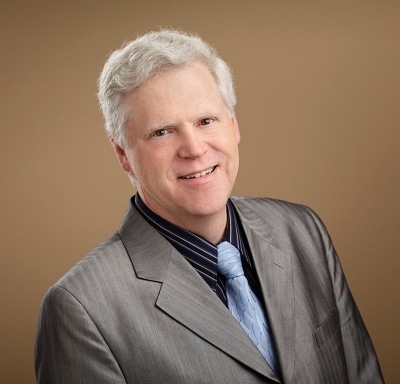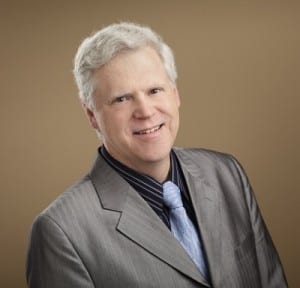Rob Riordan, executive vice president, of Nsight is speaking on day two of the LTE North America conference, taking place on the on the 8-9 November 2011 at the Fairmont Dallas Hotel in Dallas, Texas, USA. We speak to him to gain his views on how a smaller player fits into the US LTE landscape, and how to deal with the forthcoming data onslaught.
October 12, 2011


Rob Riordan, Executive Vice President, Of Nsight Is Speaking On Day Two Of The Lte North America Conference
Rob Riordan, executive vice president, of Nsight is speaking on day two of the LTE North America conference, taking place on the on the 8-9 November 2011 at the Fairmont Dallas Hotel in Dallas, Texas, USA. We speak to him to gain his views on how a smaller player fits into the US LTE landscape, and how to deal with the forthcoming data onslaught.
While the bigger carriers in the US tend to grab all the 4G headlines, for many customers, the adoption and uptake of LTE by their local operators is what will really make the difference in their daily lives.
Cellcom is the wireless division of Nsight, an operator based in Wisconsin, just north of Chicago, USA. While it might be a relatively small player, it has always prided itself as being at the cutting edge of mobile technology. It first offering mobile phone voice coverage as far back as 1987 and first offered up internet access in 1993. With 30 years of telecoms experience to draw upon, Rob Riordan, executive vice president of Nsight has been a major driver of all the company’s innovations, and the current march towards LTE is no different.
Currently, Nsight is currently building out its LTE network in partnership with Verizon, having signed up as one of the larger company’s partners to fill out its white spaces. Cellcom is building cell sites using its own equipment, and connecting them to Verizon’s core network using Verizon’s spectrum. As part of the deal, Verizon customers will gain access to Cellcom’s market, while Cellcom customers will be able to roam on Verizon when they more around the country. Like Verizon, Cellcom is CDMA based, which, Riordan says, ensures that its partnership with Verizon work well.
But for NSight, the more immediate impact of LTE will be as a fixed line replacement, providing high speed internet access to customers where there is no DSL or cable equivalent. The company already offers Axesstel boxes to customers that bring its EVDO service into their homes and offers it up as wifi, and Riordan says this is one of its biggest selling products. However, only through upgrading to LTE will these customers gain access to what can be considered true high speed broadband.
Fixed line LTE, rather than via mobile devices will also be an easier play option, due to the difficulty of obtaining devices that support its bands. In fact Riordan explains that the relationship between the bands that the major players operators own and Cellcom’s ability to obtain handsets are closely linked. It all stems, he says, from the fact that the, “bands in the US are dramatically screwed up”.
The issue, as he sees it, is that Verizon and AT&T have been able to convince the US regulator, the FCC, to have exclusive band plans that are not compatible with anybody else’s. So while devices on both networks operate 700MHz, they still won’t talk to each other. This means that while the manufacturers are willing to produce phones in large qualities at affordable prices for the larger players, the same is not true for the smaller carriers, as the economies of scale simply aren’t there.
“If I’m AT&T or Verizon and I’m buying phones, I want the phones to work in my frequencies first. So when I go and knock on the door of Samsung, Nokia, LG etc., and they say are you going to buy seven million phones, you say, obviously not. Then they say, I can’t produce that small a number. That’s where the bands are screwing it up – you can’t buy [devices] off the shelf.”
The frustration for Riordan is that while the world is combining on a single technology standard, it’s not bringing harmony. When it comes to removing the split between CDMA and GSM and settling on LTE, he believes that the US has, “jumped from the frying pan into the fire”.
“We had two different technologies rolled out in the US – GSM and CDMA. We go to LTE and everybody’s compatible –and what do we do? We go use separate band plans, so one carrier can’t talk to another carrier.”
Therefore, the fixed line option makes sense for Cellcom as an easier entry into LTE. For its fixed line LTE rollout, Cellcom will be using its 700MHz frequency and Riordan says that it also own AWS and PCS spectrum, and it intends to have live service running by next year. “The beauty of fixed is that the terminals are easier to make and there are a lot of smaller manufactures that will do something for you. We anticipate we’ll be able to roll out in 2012.”
While it’s far too early to confirm its plans for packages when it does launch LTE Riordan says that he is wary of unlimited data packages drawing on the company’s experience from its early days of providing internet access. “I’m not a fan of all-you-can–eat data, because it drives the cost of usage too high. You have to look at it and see how it impacts you. We had the same in the early days of the internet where people were using dial-up and eating everybody’s lunch.”
It’s not just the users though that Riordan says are responsible for misusing data – it’s the application developers. “You get the situation where you can design applications with no concept of bandwidth conservation because, hey, it’s already paid for, it’s free. Well the reality of it is that if you don’t have some to limit then they’ll go nuts on it – and no one will have any bandwidth.”
So how to deal with that impeding data crunch? Riordan says that he is very aware of the fact that while LTE will bring improvements in spectral efficiency it won’t be enough to cope with the data demand on its own. As he sees it there are two potential solutions – the use of additional spectrum and small cell technology.
As for the first, he admits that it’s something of a non starter for small players like Cellcom, who tend to have to pay far more in relative terms for spectrum than the big guys. “If you take the license that Verizon paid for the entire United States there were only two bidders in the room (with AT&T); so if you have to only two bidders your price will be a whole lot better than if you have 25 bidders, which is what we had in our markets. So we paid double, or in many cases even triple or quadruple.”
However, even if more spectrum did come onto the market at an affordable price, Riordan says his figures show that it would only provide a five times increase in bandwidth. So how will operators deal with the shortfall?
The answer he believes lies in small cells. “I can put femtocells in the shopping centres, stores, enterprises and hospitals and commercial building’s. And by putting those in there I’m giving the customer five bars of service. Small cells will give us at least at least a 10x increase, or in some cases a 100x increase in data throughput – it really depends on how heavily you roll it out.” The message is clear. “LTE will not do it alone. The small cell is essential to be able to meet the demand in an economical way.”
Riordan is first and foremost a technologist and is therefore looking at further developments in LTE, such as Voice over LTE, (VoLTE). “We (Cellcom) were working on Voice over IP in 1996 and in those early days it was real ugly – the standards and quality was not locked down and it kind of reeked. I think VoLTE is going to start off like that but I don’t think any carrier is going to roll it out until it is locked down. You have to remember that a circuit switched network is designed just for voice, and if you throw it on a pipe that it used for everything you could have problems. It’s on the radar but it’s not ready for prime-time.”
Overall, while Riordan expresses some frustration that the influence the larger players have on the market he knows that the very existence smaller operators is actually very important for the industry. “The fact we’re here makes the big guys listen to their customers more and be more sensitive to their needs. In a duopoly you can get a little smart and sassy. The small carriers keep everything honest.”
He’s also excited about the changes that LTE will bring once it’s ensconced as the default mobile technology. “I think the floodgates are going to open up because we’ll be able to get connected. When you’re connected 100 per cent of the time, you act differently. I always take notes in Evernote, as it ties in locally but it also ties into the cloud. And that’s because of connectedness. That’s the biggest change in the industry. It’s connectedness, at a reasonable, affordable cost – that’s really the game changer.”
Read more about:
DiscussionAbout the Author(s)
You May Also Like








.png?width=300&auto=webp&quality=80&disable=upscale)


_1.jpg?width=300&auto=webp&quality=80&disable=upscale)


.png?width=800&auto=webp&quality=80&disable=upscale)